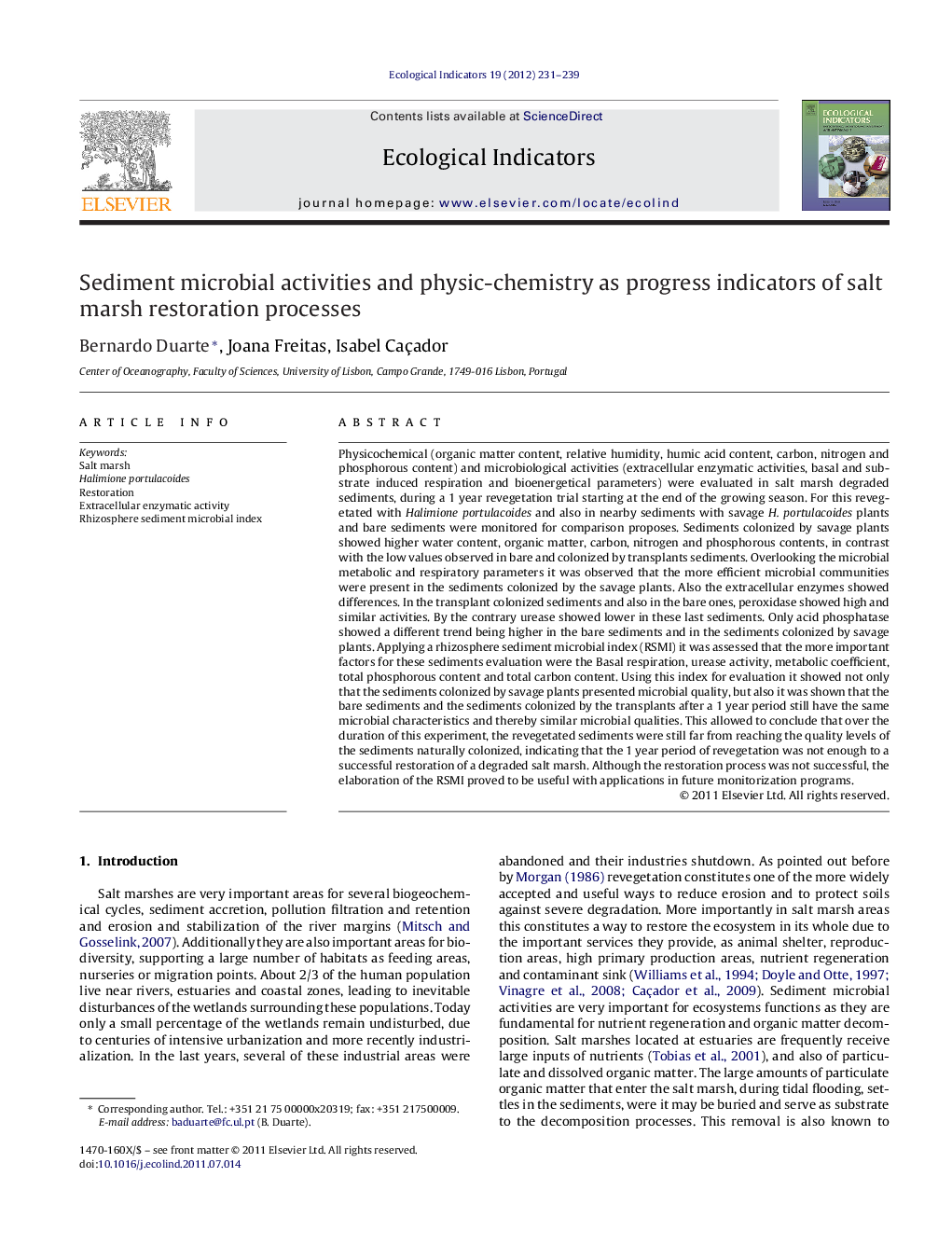| کد مقاله | کد نشریه | سال انتشار | مقاله انگلیسی | نسخه تمام متن |
|---|---|---|---|---|
| 4373729 | 1617181 | 2012 | 9 صفحه PDF | دانلود رایگان |

Physicochemical (organic matter content, relative humidity, humic acid content, carbon, nitrogen and phosphorous content) and microbiological activities (extracellular enzymatic activities, basal and substrate induced respiration and bioenergetical parameters) were evaluated in salt marsh degraded sediments, during a 1 year revegetation trial starting at the end of the growing season. For this revegetated with Halimione portulacoides and also in nearby sediments with savage H. portulacoides plants and bare sediments were monitored for comparison proposes. Sediments colonized by savage plants showed higher water content, organic matter, carbon, nitrogen and phosphorous contents, in contrast with the low values observed in bare and colonized by transplants sediments. Overlooking the microbial metabolic and respiratory parameters it was observed that the more efficient microbial communities were present in the sediments colonized by the savage plants. Also the extracellular enzymes showed differences. In the transplant colonized sediments and also in the bare ones, peroxidase showed high and similar activities. By the contrary urease showed lower in these last sediments. Only acid phosphatase showed a different trend being higher in the bare sediments and in the sediments colonized by savage plants. Applying a rhizosphere sediment microbial index (RSMI) it was assessed that the more important factors for these sediments evaluation were the Basal respiration, urease activity, metabolic coefficient, total phosphorous content and total carbon content. Using this index for evaluation it showed not only that the sediments colonized by savage plants presented microbial quality, but also it was shown that the bare sediments and the sediments colonized by the transplants after a 1 year period still have the same microbial characteristics and thereby similar microbial qualities. This allowed to conclude that over the duration of this experiment, the revegetated sediments were still far from reaching the quality levels of the sediments naturally colonized, indicating that the 1 year period of revegetation was not enough to a successful restoration of a degraded salt marsh. Although the restoration process was not successful, the elaboration of the RSMI proved to be useful with applications in future monitorization programs.
Journal: Ecological Indicators - Volume 19, August 2012, Pages 231–239